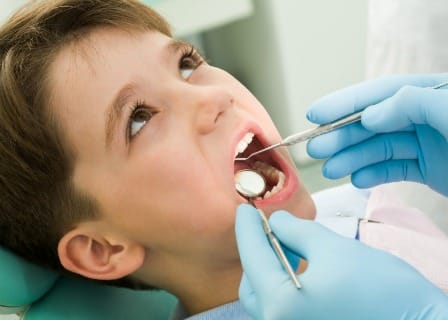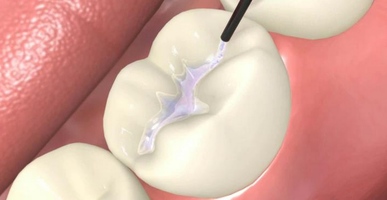 What is Tartar? Also called as calculus, tartar is a hard deposit that can trap stains on your teeth, causing discoloration. Phosphate and calcium bind together to form crystals and these calcium phosphate crystals hardens forming tartar. There are certain forms of chemicals known as pyrophosphates that help reduce calculus buildup by preventing the formation of crystals on the surface of the tooth. Tartar develops a resilient bond that can only be removed by a professional. The formation of tartar may also make it harder to get rid of new bacteria, hence possibly creating more problems down the road. What is Plaque? Plaque is a colorless, sticky bacterial deposit that is always forming on the tooth surface. Food, fluids and saliva combine to produce these film that gather on teeth as well as the line where the gums and teeth meet. Like tartar, the formation of plaque can also trap stains on the teeth, which causes tooth discoloration. Plaque is the main cause of gum disease and fighting plaque requires a lifetime of good dental hygiene. It can also lead to cavities, further weakening the teeth. Plaque may start to form on the teeth four to twelve hours after brushing – the reason why it’s very important to brush at least twice a day every day. Though necessary, tooth brushing isn’t enough. It is very important to floss every day to remove any residue from hard-to-reach places between the teeth. How to Control Tartar and Plaque? Both tartar and plaque don’t affect everyone the same way. Every person differs in their resistance and susceptibility. For many of us, tartar and plaque accumulate much faster when we age, which means that the older you get, the more you have to keep your dental hygiene in check. However, there are several ways you can change your dental hygiene practices to make sure you protect your teeth from plaque and tartar buildup.
 When your pediatric dentist tells you that you have a cavity, she often advised you to have a dental filling to protect the tooth from further decay. If left unfilled, a cavity can only worsen and the decay could lead to bone loss. The good news is that tooth-filling procedure is almost painless thanks to advancements in dentistry. Today, there is no reason not to get a filling if your dentist advises it. Dental Filling vs. Sealant One of the main differences between a filling and sealant is the longevity. A filling can last for as long as 10 years, whereas dental sealants may only last for a year. In reality, dental sealants don’t actually last that long and may depend on the person’s oral hygiene practices. Sealants are often given to kids to protect their molars from the development of decay. On the other hand, fillings are given as a treatment measure to eliminate the hole left when the dentist removes existing tooth decay. What to Expect from a Dental Filling One of the main things to expect when having your kids a filling is a conversation with the pediatric dentist on the type of material to be used. There are several options of filling material available today and your choice may depend on a mix of factors such as the appearance, the function and the cost. Some options for dental filling material include:
After you have your filling, make sure to take good care of it. It is important to practice a regular dental health routine such as brushing the teeth twice daily and daily flossing. Be sure to see your pediatric dentist for regular checkup because you may not notice when the filling begins to wear down. If a dental filling falls out or breaks, immediately see a dentist for repair or replacement.  Dental sealants are simple, fast and easy solution to prevent dental cavities. While the concept of dental sealants isn’t new, they are becoming a common treatment for children who need extra help in the dental health department. What are Dental Sealants? Dental sealants are made of plastic material that is placed on the fissures and pits of the tooth surface, mainly the molars at the back since toothbrushes cannot reach them to thoroughly clean. Most children are bad brushes and they often ignore the back part of the mouth which is a common problem area that attract cavity-causing bacteria, leading to decay. These areas are the prime target for sealants. The American Dental Association advises that children receive dental sealants as soon as their permanent teeth erupt. People who are more susceptible to decay and cavities, whether they’re genetically prone to dental caries, lack access to dental care or don’t have oral hygiene habit, must consider getting sealants as a preventative measure. How Dental Sealants Work Dental sealants fill in the pits and fissures of the teeth and smooth out the grooves that tend to trap food residue. The American Dental Association said that sealants work by ‘sealing out’ plaque and food since toothbrush bristle cannot reach all depressions and grooves. Dental sealants can last for up to 10 years, but you have to check it regularly for cracks. The problem with sealants is that if they are worn down, it is possible for the decay to form under the sealant. However, dental sealants have been proven to lower the risk of decay and cavities. Coating the biting surface of a molar with a resin-based sealant can lower the risk of developing cavities by up to almost 80 percent right after the procedure, and up to 60 percent for four years or more. Are Dental Sealants Safe? If you are a parent, you have perhaps heard the term ‘BPA’, which stands for Bisphenol A. The biggest factor when it comes to safety of dental sealants is BPA, a resin used in many forms of plastics. BPA has been cited as a hormone disruptor and prenatal exposure to BPA is associated with anxiety and hyperactivity in babies. However, dental sealants do not contain BPA, but many of them contain compounds that change into BPA once exposed to saliva. But dental professionals claim that the amount of exposure is extremely low and can even be further reduced by rinsing and scrubbing sealants after they’re placed. This issue is still under a heated debate as some dentists believe there is not enough BPA in sealants to warrant any concern while other dentists maintain their stand of preventing exposure of BPA at any level. If you do opt to have dental sealants, be sure to discuss with your pediatric dentist first about rinsing and scrubbing the sealant once applied. |
AuthorMint Kids Dentistry Archives
July 2021
Categories |
Location |
|
Sitemap
|
Forms
|

 RSS Feed
RSS Feed